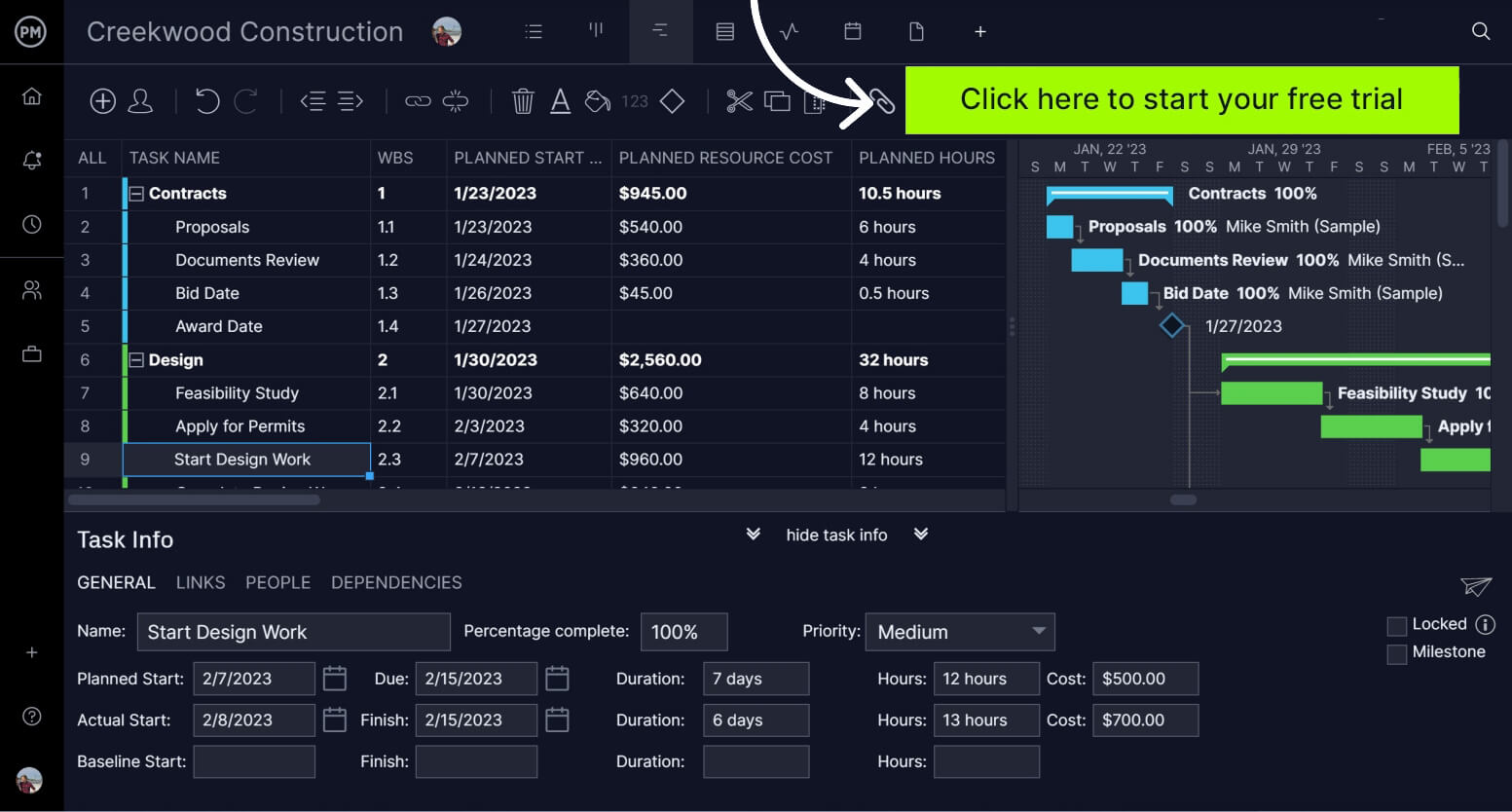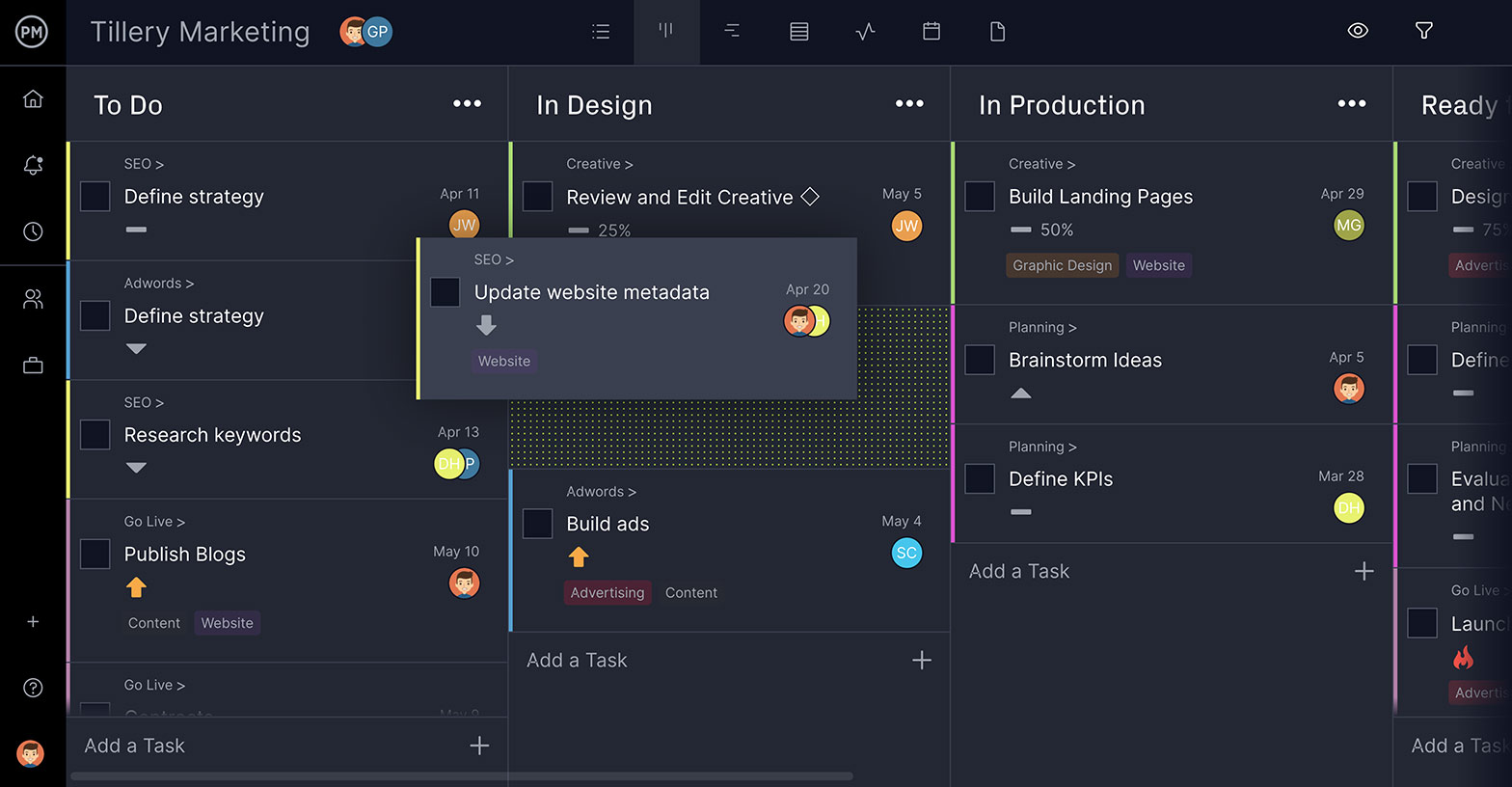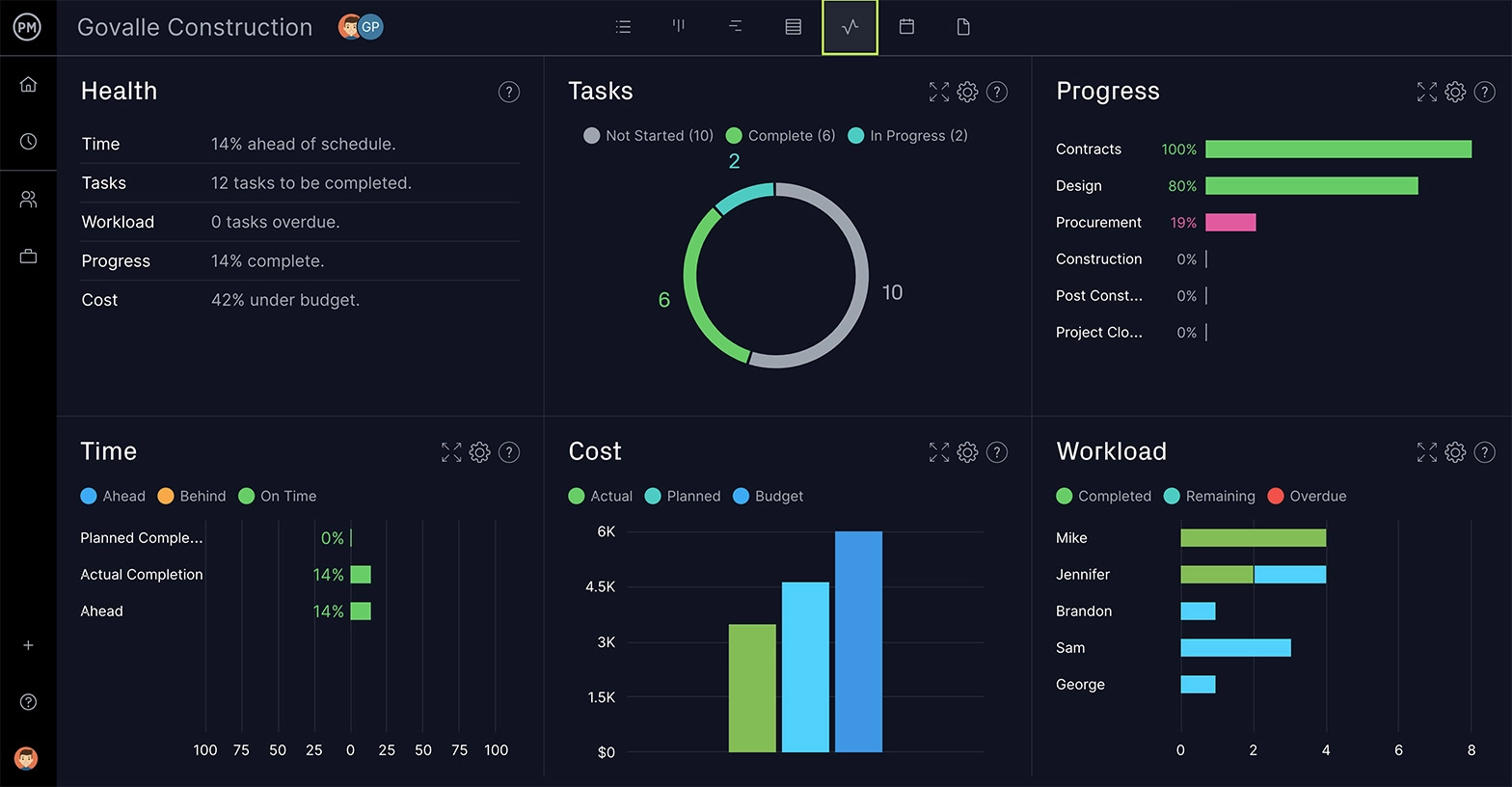Projects are made up of many tasks which are mapped out on a project schedule so they can be executed in a timely and organized manner. One of the most important steps when creating a project schedule is to identify task dependencies, as they’re critical for time and task management.
What Are Task Dependencies in Project Management?
Task dependencies are the interrelations that exist between project activities. These task dependencies determine the order in which project tasks must be executed. For example, some tasks need to be executed in sequence, meaning one task must be completed before the next can begin.
However, that’s just one of the four types of task dependencies that you could come across as a project manager. You might even need to manage all types of task dependencies in just one project, so you must be ready.
Let’s review each of the four task dependency types to understand how they affect project scheduling and task management.
Get your free
Task Tracking Template
Use this free Task Tracking Template for Excel to manage your projects better.
4 Types of Task Dependencies
These are the four types of task dependencies you might encounter when scheduling your projects.
- Finish-to-start (FS): This is the most common type of task dependency. A finish-to-start task dependency means a task can’t start until its preceding task is finished. This occurs in most projects where work needs to be executed sequentially.
- Finish-to-finish (FF): A finish-to-finish task dependency happens when a task can’t finish until its preceding task is completed as well. This is common in projects where tasks can be executed simultaneously, but must be finished in sequence.
- Start-to-start (SS): A start-to-start task dependency indicates that there’s a task that can’t start unless its preceding task starts. Once the first task starts, then the second can start and they can both be executed simultaneously.
- Start-to-finish (SF): This isn’t a common task dependency, as it only occurs under specific circumstances. The start-to-finish task dependency occurs whenever a task needs its preceding task to start before it can finish.
To identify and manage task dependencies, you need robust project planning, scheduling and tracking tools. ProjectManager is equipped with online Gantt charts, kanban boards and task lists that let you set task dependencies, manage recurring tasks, identify the critical path and much more. Get started for free today.

Task Tracking Template
A very important part of managing tasks is the ability to track their progress. Our project task tracking template is a great place to list all your project activities as well as their dependent tasks, assignee and due dates.
More Task Management Templates
Task management can be overwhelming for some project managers. That’s why we’ve created these free task management templates to facilitate task tracking and scheduling.
Work Breakdown Structure Template
A work breakdown structure (WBS) is a project planning tool that allows project managers to identify all the tasks that are needed to deliver a project, their priority level and any dependencies among them.
To-Do List Template
To-do lists are a must-have task management tool due to their simplicity and effectiveness. Our free to-do list template is ideal for managing personal task lists.
Project Timeline Template
Our free project timeline template allows you to quickly organize your project tasks on a timeline that shows tasks, their duration and due dates.
Project management templates can be a great alternative for beginner project managers. However, templates are static documents that can’t be compared to robust project management software such as ProjectManager. ProjectManager offers the best planning, scheduling and tracking tools to manage your projects.
Task Dependencies Explained in 5 Minutes
In this PM training video, Devin Deen, project management expert and trainer, explains basic concepts of task dependency mapping and discusses how to calculate task and activity length and duration to create better project schedules.
In Review: How to Estimate Tasks and Dependencies
As Devin said, estimating time on a project is a bit of a guessing game. He noted three different things that were important to remember when you approach this project management art.
- People aren’t great at estimating activity task duration
- People tend to fill the available time with the effort required to do the task
- Always plan for slack on your project schedule
That said, Devin walked through a number of ways to do the best you can to estimate how long a task may take on your project. Even if you can’t be certain as to its duration, it’s your job to calculate all the variables to the best of your ability and have a window in which you’re pretty sure that work will be completed. Use task management software to make it easy to check in on your team and make sure they are coming close to their estimates.
Pro tip: When working on an activity estimation, remember that your team may not be great at estimating the time that their tasks will take. People, as noted, will use the time allotted rather than the time a piece of work takes. That’s why it’s crucial that you factor this in and give your deadlines some breathing room or else be stuck with an unfinished task.
Thanks for watching!
ProjectManager Tracks Task Dependencies
Being able to identify task dependencies in your project plan helps to avoid costly delays. ProjectManager has interactive Gantt charts that link task dependencies so you always know when tasks must be finished or started. You can even note which of the four types of dependencies it is. Gantt charts can be edited easily by dragging and dropping the dates to their new location and then shared with the team to keep everyone in the loop.
Multiple Task Management Views
There are many different types of tasks such as recurring tasks that can be set up in our tool. You can even create recurring tasks directly within projects to save wasted time. But teams aren’t going to use Gantt charts to execute their tasks, which is why we have multiple project views. They can use our robust list view or the visual workflow of the kanban board to manage their backlog and collaboratively plan sprints.

Track Progress with Project Dashboards
Linking task dependencies will help avoid delays, but if you want to keep your project on schedule you must have tools to monitor your progress and performance. That way, if things become derailed, you can reallocate resources to get back on track. Our project dashboards require no setup like with lightweight tools and automatically collect live data that’s displayed in easy-to-read graphs and charts. Get a high-level view of your project in real time at any time.

ProjectManager is award-winning project management software that links task dependencies for a smoother running project. We help you plan, schedule and track your projects so you can deliver success. Join the teams at NASA, Siemens and Nestle who use our software. Get started with ProjectManager today for free.

